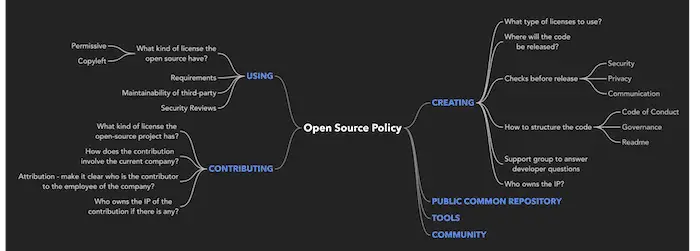Open-source software has been incredibly important in the development of software over the past two decades. Making the source code accessible and modifiable by the public leads to faster and more effective software development. Because of this, more and more businesses are utilizing an open-source approach to Managing Open Source Components.
But making your components open source comes with security risks. Many open-source components have not followed a structured development schedule. They, therefore, become outdated, with licenses missing or modified, and no one is responsible for updating them.
This leads to security vulnerabilities, poor software quality, and licensing issues. For this reason, it is crucial to mitigate risks by implementing certain fixed practices.
See Also: LMS For Compliance Training | Select The Perfect LMS For Your Needs
Table of Contents
What Is Open Source Software?
Before talking about managing open-source components, you need to understand what open-source softwares are. Open-source software is a term used to describe a project that makes its source code available to the public. These projects are safeguarded by open-source licenses, which place limitations on how and why code may be used. Standard users can typically use and modify open-source software for free.
Generally, community volunteers are the ones who create and maintain open-source projects. Though, sometimes the major organizations also contribute to certain projects such as Kubernetes and Linux. Suh collaborations result in much more innovative tools and applications by eliminating the lack of compatibility and biases, usually present in proprietary software.
Many teams have embraced the adoption of open-source code due to its flexibility and free access. Organizations are increasingly choosing to use and customize open-source components where they once only used proprietary technology. In many industries, this has helped even the playing field, enabling more people and organizations to participate in the development of various technologies.
Managing open-source software
Following are the ways to Manage Open-Source Software:
Outline a usage policy
In theory, a completely free approach to managing open-source components would be ideal. This gives developers the space to try innovative new ideas. However, without a usage policy in place, you also open up the software to vulnerabilities. These vulnerabilities then fall on you.
A usage policy does not need to be restrictive in order to be effective. It simply needs to put some boundaries in place so as to protect the components.
Implement prompt updates
Bugs in open-source components can create chaos fairly quickly. They make all applications using these components vulnerable to attacks.
In order to prevent this from happening, you need to implement prompt updates to all relevant applications as soon as a bug is found and fixed.
Participate in the community
As an open-source developer (or simply a developer using open-source components), you can choose to play very little part in the community. Ultimately, open-source software development does not require community collaboration from every party involved.
However, it is a wise decision to participate in the community. Many well-known open source software companies, for example, TinyMCE WYSIWYG HTML editor or WordPress CMS, take the feedback from the community into consideration for future bug fixes or features planning. You are using this community to make your own job easier, and they are more than willing to collaborate. Give back by improving other open-source software and choose collaboration as often as possible.
Fork as often as possible
You can work on the source code itself, improving it by making modifications. If you are careful and responsible in how you go about this, you should not run into any major issues. However, it is worthwhile being able to look back on the original so as to track changes.
Forking refers to creating a private copy and working on it rather than the original. It is an effective way of testing out changes before implementing them. The only downside is that you will have to merge changes later on with the original version of the component.
Use a binary repository manager.
In a similar vein, Local caches of open-source components are possible with the aid of a binary repository manager. This enables you to go on developing the code even when there are external repository outages. It also gives you better control by separating non-compliant artifacts from the original code.
Open-source coding is a great way of developing software. However, while it is tempting to take a completely free approach to managing open-source components, implementing some best practices is worthwhile.
See Also: 8 Best Self Monitored Home Security System Of 2024
FAQs
What are open-source components?
‘Open-Source Components’ are pieces of software that are made available under a license that has been endorsed by the Open Source Initiative, such as the GNU Lesser General Public License (LGPL), Mozilla Public License (MPL), or any other license.
What are various open-source licenses?
Numerous open-source software programs have been published under a few common open-source license types. Every one of them has distinct usage guidelines. HTTP License General Public License for GNU, General Public License for GNU, a BSD license, License: MIT, Public License for Eclipse, Firefox Public License.
What are some open-source educational apps?
OLAT, Omeka, openSIS, Sakai Project, Claroline, ATutor, ILIAS, Moodle, DoceboLMS, Chamilo, eFront, SWAD, Tux Paint, GCompris, Gnaural, and more.
Which open-source softwares are the best?
It's hard to list down a few because there are several amazing open-source software such as OpenProject, Audacity, LibreOffice, Mozilla Firefox, Mozilla thunderbird, Linux, WordPress, GIMP, VLC Media Player, Shotcut, SuiteCRM, Passbolt, etc.
Conclusion
Open Source software provides additional benefits like transparency and increased security to businesses. This is why open-source software has become a trend in the business world. With increased demands for open-source software comes additional pressure to know more about managing open-source components. This article will certainly provide 5 best practices that you can utilize for managing open-source components.


